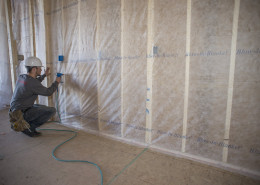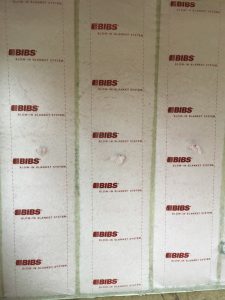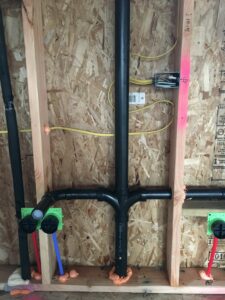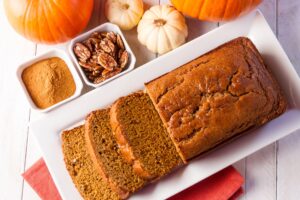Top three home insulation types
A well-insulated home is key for affordably staying comfortable. In the Pacific Northwest, proper insulation keeps energy costs down by keeping the home cool in the summer and warm in the winter. While there are several types of home insulation, Evergreen Homes has found blown-in-blanket (BIB) insulation is the best option for the homes they build.
In insulation terms, R-Value is defined as the material’s ability to resist heat loss. Insulation is installed in the walls, ceiling, and floors of homes to increase the R-value and keep the inside at the desired temperature—essentially to keep the conditioned air the homeowner has paid to heat or cool inside the house. The better the material is at keeping the conditioned air in the home the higher the R-value. For example, a 2×4 wall with fiberglass batt insulation is rated at R-11. Typically, 2×6 walls, with a fiberglass batt are rated at R-19 to R-21.
Rolled Batt Insulation
Rolled fiberglass batt insulation, the big rolls of pink stuff you see at the home improvement centers, is the go-to product for many home builders and home owners. Relatively inexpensive, rolled batt comes in many different sizes and R-values.
One reason for the popularity of this product is ease of installation, because it doesn’t require special equipment. There are some drawbacks.
• The batt insulation is itchy if proper protection isn’t worn, and must be cut by hand to fit into each space, or stud bay. The R-value of batt insulation decreases by as much as 50% if it’s compressed or cut incorrectly, leaving voids and gaps.

Figure 1 – Installer stapling fine mesh to face of the wall studs
• It’s time consuming to get a rolled batt properly installed in a stud bay. When electrical outlets and wires, HVAC or plumbing pipes cut through a stud bay, like in Figure 1, it’s more likely an installer will do a rough cut and move on, leaving gaps or stuffing it around the obstacles to make it fit. Because it compresses so easily even when you’re careful, as seen in Figure 2, it is impossible to achieve a perfect installation.
Blown-In-Blanket (BIB) Insulation
An alternate to the rolled batt insulation is the Blown-In-Blanket (BIB) system. The installer staples a fine mesh to the face of the wall studs (shown in Figure 1) to hold the insulation in place until the sheetrock is installed, and then blows insulation material into the cavity through a hose.
The standard R-value for a 2×6 wall is R-24 to R-26. An experienced installer will have no trouble achieving that R-value rating as the material easily flows around wires, pipes, and electrical boxes to completely fill the cavity. What is left is a cavity or stud bay that is uniformly filled, as shown in Figure 3.
Evergreen Homes has been using this for years with great results. The BIB system not only increases the R-value of the home, but it’s better at air sealing each stud bay (the conditioned air stays in the home) as well as making the home much quieter. That said, the BIB system does have some limitations, and there are places where the equipment can’t reach, like behind a soaking tub, where batts will still need to be used. In this instance, the batt insulation should be installed behind the tub before the tub is in place to have the easiest access and best installation.

Figure 3 – Stud bay after
The BIB system is a superior product because:
- Every stud bay is custom fit with the perfect amount of insulation, with no gaps, voids, or overly compressed sections.
- The high-density material won’t settle or shrink over time.
- The material does not support mold growth, a concern in the Pacific NW.
However, the BIB system is more expensive than the rolled batt (around $1,000 for an 1,800 square foot home), and while blowers can be rented for smaller jobs, do-it-yourselfers may have trouble installing it on their own.
Other forms of insulation
Other methods for insulating the house include spray foam, which involves spraying a liquid into the insulation cavity that will expand to fill the area and any gaps. Once dry, the excess is cut away. The foam contains chemicals that can cause asthma or other health side effects during application. It’s recommended that the house remain empty for at least three days after applying it.
Spray foam has the highest R-rating of these three types, but it’s also the most expensive option. However,
Evergreen Homes uses spray foam for smaller applications on every build, such as sealing penetrations in the exterior walls for electrical boxes, HVAC ducts, vents, plumbing, etc. We recommend using a professional for installing this type of insulation.
Evergreen Homes will work with you during the construction of your home to find the best fit for you. Cost, energy-efficiency, and availability of skilled installers will always be considered. If you’re interested in more information about insulation or other construction topics, please contact Evergreen Homes with any questions.




